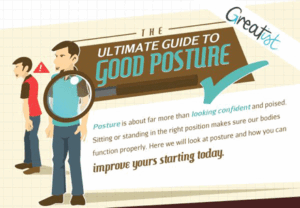Sprain vs. Strain; What’s the Difference?
Sprain vs. Strain; What’s the Difference?
So you think you might have sprained or strained something. How do you know which it is, and does it matter? You’ve heard the two terms your entire life, but did you know that there is not only a major difference between them, there are also varying grades and degrees of them?
For starters, you STRAIN muscles (and tendons), and you SPRAIN joints (ligaments/joint capsule). The difference may seem inconsequential when considering the acute pain of the situation, but when determining the extent of the injury and the appropriate approach to recovery, you should know what you are mending. Either injury can be a nag, but the key is to understand the severity in order to best determine the appropriate time to consider a return to activity. Typically, you should consider a window of anywhere from 5 days to 6 weeks for a full recovery. Injuries can vary in healing time depending upon the amount of damage (degree or grade of injury). A good rule of thumb I like to use is when you feel no pain or instability in the injured area, you should likely wait another 25% of the time it has taken to get to that point. This means that when the injured tissue is healing, you will experience a period when you THINK it is healed, but it is still “paper thin” and even the mildest aggravation will likely cause an exacerbation of the original injury. This is the hardest part of the recovery. You feel ok. You have a schedule to keep. You want to stay on track, but you end up coming back too soon. Have respect for the body’s ability to remodel collagen and allow it to do what it does naturally. Typically when we see injuries that are on-going or “repetitive”, it’s primarily due to pre-mature use of the injured area.
Sprains
Sprains can be a real nuisance. Often, people who have sprained an ankle, for example, will report that they frequently re-injure the same ankle frequently. This is because unlike muscle and tendons that have contractile fibers (they shorten and lengthen), ligaments do not. Ligaments are designed to stabilize a joint, so they have VERY few contractile fibers. When they are placed under harmful load, they tear partially or completely and in cases of grade III sprains, they can tear off the bone they are attached to. The recovery process depends upon the grade of the sprain.
Ligament fiber stretching, or tearing is referred to as a sprain. Sprains are described by the grade of the injury such as mild or grade 1, moderate or grade 2, and severe or grade 3. In a mild sprain only a few ligament fibers are torn and the ligament has likely undergone stretching that is not permanent. You are likely to feel pain with stretching the ligament, the joint may be swollen, and the muscles around the joint may be in spasm. In moderate or grade 2 sprains a more significant number of ligament fibers are torn. The ligament has likely undergone some degree of overstretching, and will remain somewhat overstretched, with the result being some degree of joint laxity. Pain will usually be moderate to severe when the ligament is stretched, local spasm is likely in surrounding muscles, and there will likely be moderate swelling. When the ligament is severely torn or ruptured the sprain is a grade 3 or severe sprain. Most if not all ligament fibers will no longer be intact, and will need to be reattached. Permanent changes in joint stability are likely. Pain will usually be severe at the time of injury, but may not be present later on with joint movement if the ends of the ligament are no longer connected. There will be a moderate level of swelling around the affected joint and local muscle spasm is likely.*
Mild or grade 1:
- Few ligament fibers torn.
- Temporary ligament stretching possible
- Mild to moderate pain with stretch
- Minor swelling
- Local muscle spasm likely
Moderate or grade 2:
- More ligament fibers torn
- Ligament overstretching likely
- Joint laxity likely
- Moderate to severe pain with stretch
- Moderate swelling likely
- Local muscle spasm likely
Severe or grade 3:
- Severe tear or rupture
- Fibers likely need repair
- Permanent changes in joint stability likely
- Pain severe at injury
- Pain may recede if ends detached
- Moderate swelling likely
- Muscle spasm likely
Strains
Muscle strains are graded at three levels – first degree or mild, second degree or moderate, and third degree or severe. In a first-degree strain only a few muscle fibers are torn. There is likely to be some level of post-injury soreness, but the individual will be back to normal levels of activity rather quickly. In a second-degree strain there are more fibers involved in the injury. There is likely to be a greater level of pain with this injury, and a clear region of maximum tenderness in the muscle tissue. A third-degree strain involves a severe tear or a complete rupture of the muscle tendon unit. In a complete rupture there is likely to be significant pain at the time of the injury. Notably, pain may be minimal if the muscle ends are completely separated because moving the limbs will not put additional tensile stress on the separated ends of the muscle.*
First degree:
- Minor weakness evident
- Minor muscle spasm
- Swelling possible, minor
- Minor loss of function
- Minor pain on stretch
- Minor pain in resisted isometric contraction
Second degree:
- Weakness more pronounced
- Weakness due to reflex inhibition
- Moderate to major spasm in injured muscles
- Moderate to major spasm in nearby muscles
- Moderate to major swelling
- Moderate to major impaired function
- Pain likely strong during stretch
- Pain likely strong with resisted isometric contraction
Third degree:
- Pronounced muscle weakness
- Muscle may not function
- Spasm if muscle is intact
- Surrounding muscles in spasm
- Moderate to major swelling
- Loss of function due to reflex inhibition
- Pain severe at injury, but may recede
If you follow these guidelines and are vigilant about providing proper care, your injury should mend and not give you further troubles. If you rush your return, you will only be slowing the process. This is too often the case and clients are often troubled by whey they are still having issues. Your body is remarkable and resilient. However, it need you to be disciplined to protect it when the time comes.
*excerpt of this were originally written by Whitney Lowe, Founder of the Academy of Clinical Massage
Ready to #feelbetter?
You're just a click away from a wicked good massage!
-

60 Minute Massage Gift Card
$170.00 Add to cart -

90 Minute Massage Gift Card
$255.00 Add to cart -

Mini Aer Small Room Air Purifier
$149.00 Add to cart -
Sale!

Thera-Pearl Sports Pack/Hot Cold
Original price was: $14.99.$12.99Current price is: $12.99. Add to cart -

3 Somadome Sessions Gift Card
$135.00 Add to cart -

TheraBand CLX Connective Loop
$14.99 Select options -

6 Somadome Sessions Gift Card
$270.00 Add to cart -
Sale!

Biofreeze
Original price was: $14.99.$12.99Current price is: $12.99. Add to cart
Passion Mountain
I was at an event recently and was asked by somebody how I could STILL be so passionate for what I do. He said, “What I mean is that you talk about what you do with the passion of child flipping through a new pack of baseball cards. I wish I was that passionate about…
Read MoreFish You Should Scale Back On
New Englander’s love their seafood and we deepen our love affair every summer when our favorite crustaceans, ‘lobstah’ is a plentiful. But what is the best seafood for us and what are the ones that we should be staying away from regardless of how yummy they may be? Monterey Bay Aquarium has combined data from…
Read MoreSports are a Great Metaphor
It’s no secret that my life has always revolved around athletics. From my early days playing pop warner football, through my college years of lacrosse and on into the various community leagues since, being part of a team has always been where I feel most comfortable. What I enjoy most about being part of a…
Read MoreWhat is an Expert?
“An expert is someone widely recognized as a reliable source of technique or skill whose faculty for judging or deciding rightly, justly, or wisely is accorded authority and status by their peers or the public in a specific well-distinguished domain.” – Wikipedia This past month I flew to Atlanta to present a few classes in…
Read MoreThe Power of a Hug
Originally Posted 5/1/2014; following the 1 year anniversary of the Boston Marathon Bombings and our mission to rebound after these horrible attacks on our city. We helped orchestrate the ‘One Run for Boston’; a 3328.2 NON-STOP running relay from LA to Boston, raising over $500K for the victims and survivors of the events of 4/20/2013.…
Read MoreTips from the Table
Without fail, every marathon season, I am asked by my patients, what kind of advice I would offer up to them as they prepare to run the Boston marathon. I first admit that I have never (nor will ever) run a marathon, but given my unique insight of spending 1000’s of hours alone in a…
Read MoreShoulder Impingement
The glenohumeral joint is a highly complex articulation. It has the greatest range of motion of any joint in the body. However, its increased motion occurs at the expense of stability, requiring the soft tissues to play a more critical role in maintaining joint integrity. As a result of increased mechanical demands, numerous soft-tissue injuries…
Read MoreTrain, train, train. Train of fools.
In my seventeen years as a massage therapist, I am still amazed by some of the things I see in my office. Being situated 1/10th of a mile from the finish line of one of the most prestigious marathons in the world, the Boston Marathon, we see more than our fair share of runners coming…
Read MoreAchilles Tendon Disorder
Achilles Tendon Disorder Massage therapists see many clients with active lifestyles. Running, jumping, dancing, climbing, or any number of other activities can put serious stress on the Achilles tendon (AT). AT disorders also can contribute to biomechanical disorders in the foot and lower extremity. That is why it is important for the massage practitioner to…
Read More


